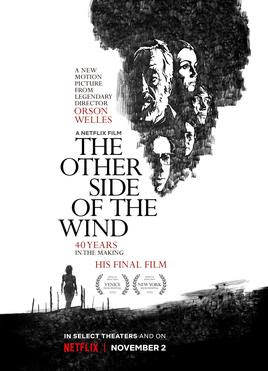In the interest of diversifying my offerings on A Classic Movie Blog, I didn’t review as many books in 2018 as I have in previous years. However, much of what I did read inspired me and in many cases greatly expanded my film knowledge. These are the works that stuck with me. I have excerpted my reviews below, titles link to the full post:
The Female Gaze: Essential Movies Made by Women
Alicia Malone
While Backwards and In Heels focused on the full array of women working behind-the-scenes in film, The Female Gaze spotlights the films they have directed. In a fascinating move, Malone does this by recruiting more female voices. Of the fifty movies discussed in the book, she has written several extensive essays herself, which are complemented by shorter essays contributed by working and aspiring female film critics. When it comes to elevating the voices of women, Malone is clearly serious about covering her bases....The Female Gaze is a fun read and an essential work in a world where the film industry is starting to head down the right track where female filmmakers are concerned, but still has a long way to go.
Stuntwomen: The Untold Hollywood Story
Mollie Gregory
University Press of Kentucky, 2015 (paperback 2018)
It took decades of fighting for women to find their place in the boy’s club of stunt work. In addition to sexual harassment, replacement by men for female roles, and closed hiring practices, women who did find work were held to higher standards. If a man made a mistake, he was forgiven. If a woman faltered, she was deemed unqualified for the job....
Gregory covers these struggles in detail, but she also consistently focuses on the joy of the profession. These women fought and continue to fight for better conditions and more access to jobs because they are passionate about performing stunts. In several stunt performer profiles, Gregory shares the many ways these women enjoy the thrill of this physical, risky, and rewarding work.
Hooked on Hollywood: Discoveries from a Lifetime of Film Fandom
Leonard Maltin
Good Knight Books, 2018
Before the movie guidebooks, television review gig, and thriving podcast, film critic Leonard Maltin was a teenage cinema fanatic living in New York City. There he had access to archives, rare film screenings, and some of the best performers and creators in the business. He made the most of these connections, writing thoughtful reviews of what he saw, putting in diligent research, and coming to interviews with a wealth of knowledge about and respect for his subjects….
I enjoyed the earnest tone and thorough research of Maltin’s early writings, but it was the interviews that moved me the most. In his respectful, even reverential treatment of these people who for the most part had been forgotten by the public, or at the very least undervalued, he reminded me a lot of the gentlemanly way Robert Osborne would celebrate industry greats. As much as I have seen Maltin as a promoter and lover of all aspects of film history, I hadn’t seen this side of him before. It wasn’t surprising, but it was a pleasant revelation.
Magnificent Obsession: The Outrageous History of Film Buffs, Collectors, Scholars, and Fanatics
Anthony Slide
University Press of Mississippi, 2018
This is a community with which Slide is intimately familiar, which gives the book an authenticity that would be impossible to achieve as an objective observer. He goes into the history of movie fandom, collecting, and the connecting culture, even explaining the origin of the term “film buff.” There is also much attention given to the habitat of the film fanatic, from theaters and bookstores to trade shows and private screenings.
Most fascinating of all though, are the people from this world. Slide has known many of them personally and they are an unusual bunch. Though I already knew a lot about the social awkwardness, theft, and eccentric personalities to be found in this milieu, I found plenty to surprise me here. I had also had a taste of the bizarre behavior to be found in this scene via a series of difficult and oddly amusing phone calls with one of the men featured in this book in the process of arranging an interview with an actor several years ago. Despite all this, I didn’t expect the level of aggressively antisocial, sexually depraved, and mentally unstable behavior I found here.
Space Odyssey: Stanley Kubrick, Arthur C. Clarke, and the Making of a Masterpiece
Michael Benson
Simon & Schuster, 2018
So much of the story is related directly by people who made the film that you get a palpable feeling of what it was like to be there. For that reason, this is an especially lively and engrossing production history.
Having access to so much first source information has also enabled Benson to dig into the complexities of making the film, where second unit location shooting often held as much drama as Kubrick’s action at the studio. It is easy to see why movies go over budget and schedule when presented with how many tasks make up the creation of a scene, let alone an entire production. Understanding the importance of all of those elements is what made Kubrick an effective, and occasionally infuriating, filmmaker….
Perhaps the greatest compliment I can give this book is that I went into it not a particular fan of 2001: Space Odyssey and came away eager to give it another chance. Rewatching the film afterwards, I found the experience profoundly different because I had a greater understanding of the passion and intelligence behind it.
My deepest respect and thanks to these authors for all that they do to inform and entertain film lovers!










































